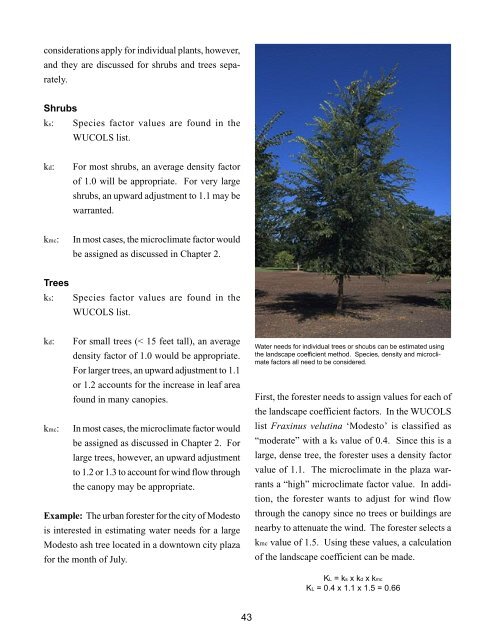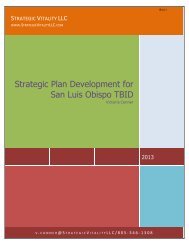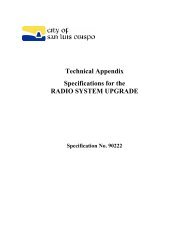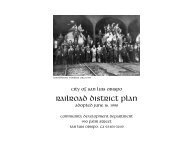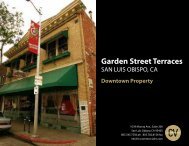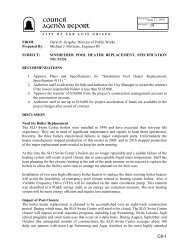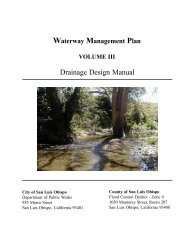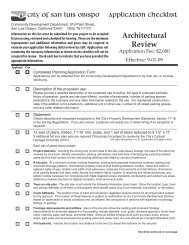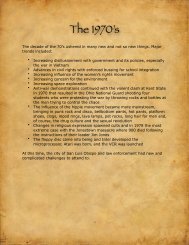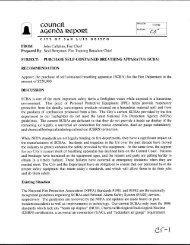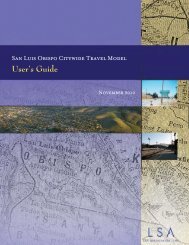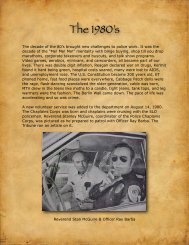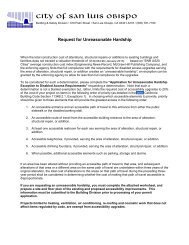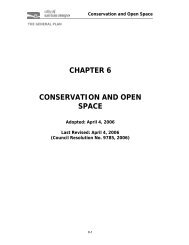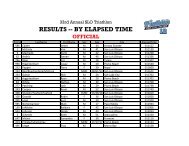Guide to Estimating Irrigation Water Needs of Landscape Plantings
Guide to Estimating Irrigation Water Needs of Landscape Plantings
Guide to Estimating Irrigation Water Needs of Landscape Plantings
You also want an ePaper? Increase the reach of your titles
YUMPU automatically turns print PDFs into web optimized ePapers that Google loves.
considerations apply for individual plants, however,<br />
and they are discussed for shrubs and trees separately.<br />
Shrubs<br />
ks: Species fac<strong>to</strong>r values are found in the<br />
WUCOLS list.<br />
kd:<br />
For most shrubs, an average density fac<strong>to</strong>r<br />
<strong>of</strong> 1.0 will be appropriate. For very large<br />
shrubs, an upward adjustment <strong>to</strong> 1.1 may be<br />
warranted.<br />
kmc:<br />
In most cases, the microclimate fac<strong>to</strong>r would<br />
be assigned as discussed in Chapter 2.<br />
Trees<br />
ks:<br />
Species fac<strong>to</strong>r values are found in the<br />
WUCOLS list.<br />
kd: For small trees (< 15 feet tall), an average<br />
density fac<strong>to</strong>r <strong>of</strong> 1.0 would be appropriate.<br />
For larger trees, an upward adjustment <strong>to</strong> 1.1<br />
or 1.2 accounts for the increase in leaf area<br />
found in many canopies.<br />
kmc:<br />
In most cases, the microclimate fac<strong>to</strong>r would<br />
be assigned as discussed in Chapter 2. For<br />
large trees, however, an upward adjustment<br />
<strong>to</strong> 1.2 or 1.3 <strong>to</strong> account for wind flow through<br />
the canopy may be appropriate.<br />
Example: The urban forester for the city <strong>of</strong> Modes<strong>to</strong><br />
is interested in estimating water needs for a large<br />
Modes<strong>to</strong> ash tree located in a down<strong>to</strong>wn city plaza<br />
for the month <strong>of</strong> July.<br />
<strong>Water</strong> needs for individual trees or shcubs can be estimated using<br />
the landscape coefficient method. Species, density and microclimate<br />
fac<strong>to</strong>rs all need <strong>to</strong> be considered.<br />
First, the forester needs <strong>to</strong> assign values for each <strong>of</strong><br />
the landscape coefficient fac<strong>to</strong>rs. In the WUCOLS<br />
list Fraxinus velutina ‘Modes<strong>to</strong>’ is classified as<br />
“moderate” with a ks value <strong>of</strong> 0.4. Since this is a<br />
large, dense tree, the forester uses a density fac<strong>to</strong>r<br />
value <strong>of</strong> 1.1. The microclimate in the plaza warrants<br />
a “high” microclimate fac<strong>to</strong>r value. In addition,<br />
the forester wants <strong>to</strong> adjust for wind flow<br />
through the canopy since no trees or buildings are<br />
nearby <strong>to</strong> attenuate the wind. The forester selects a<br />
kmc value <strong>of</strong> 1.5. Using these values, a calculation<br />
<strong>of</strong> the landscape coefficient can be made.<br />
KL = ks x kd x kmc<br />
KL = 0.4 x 1.1 x 1.5 = 0.66<br />
43


